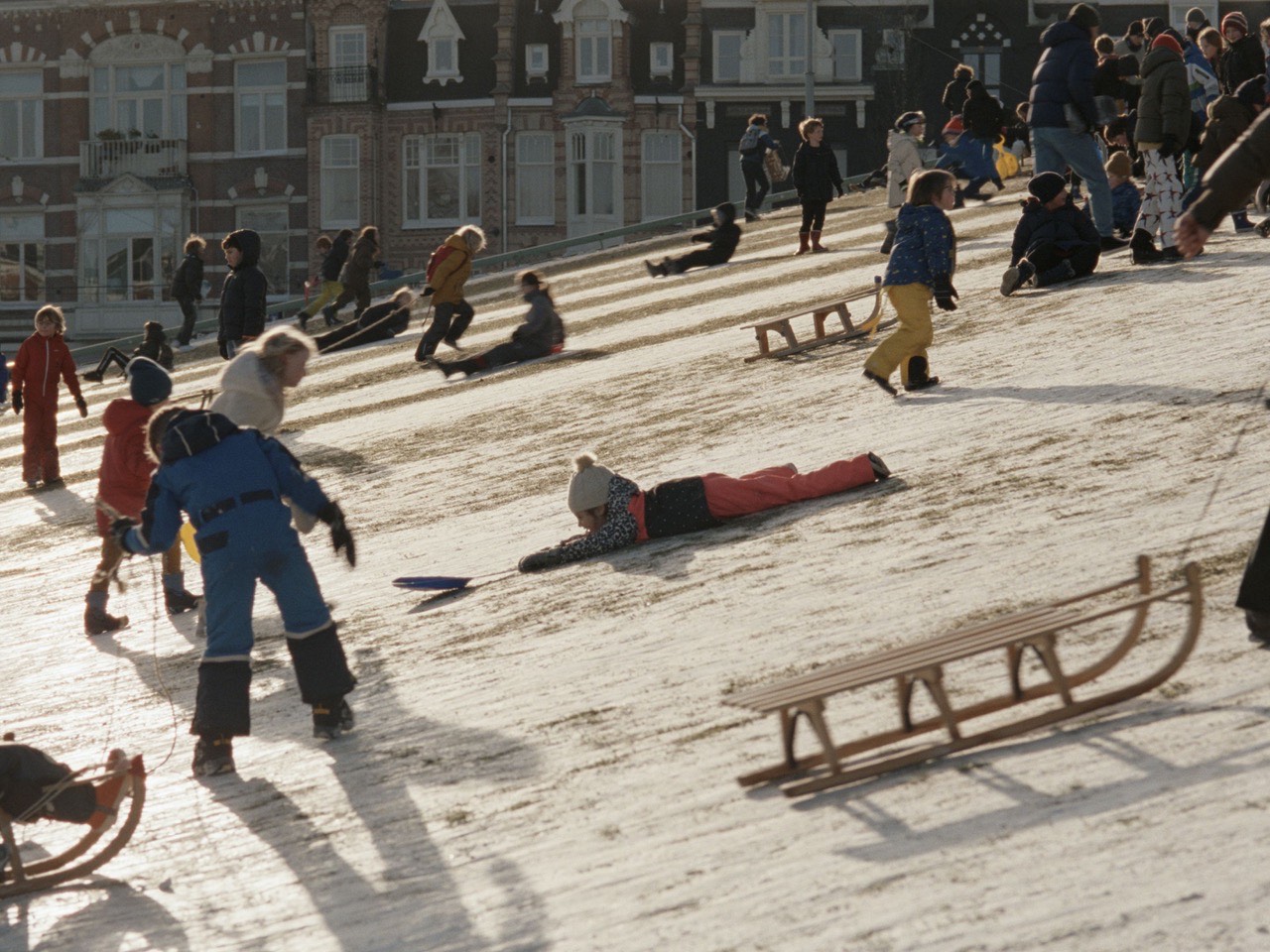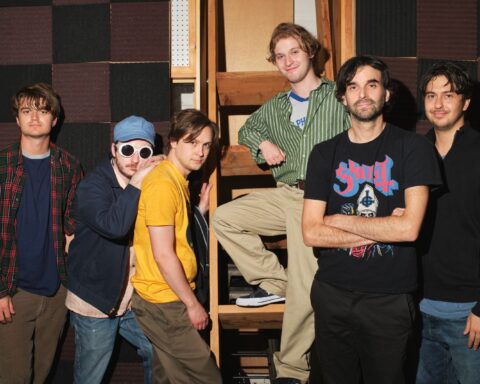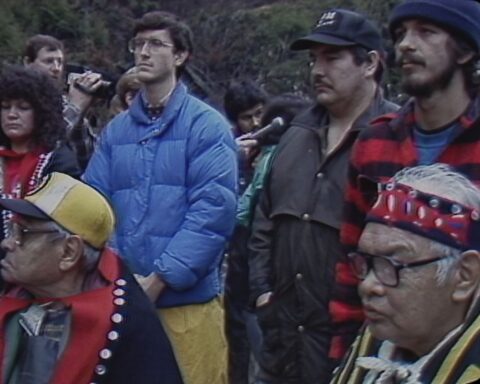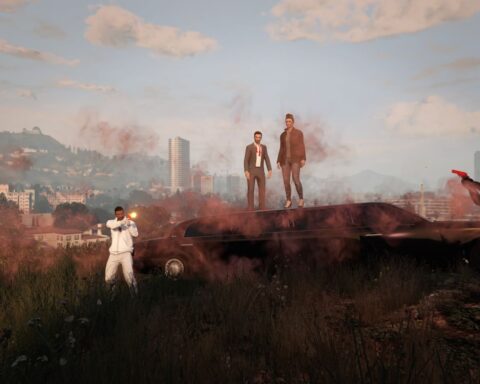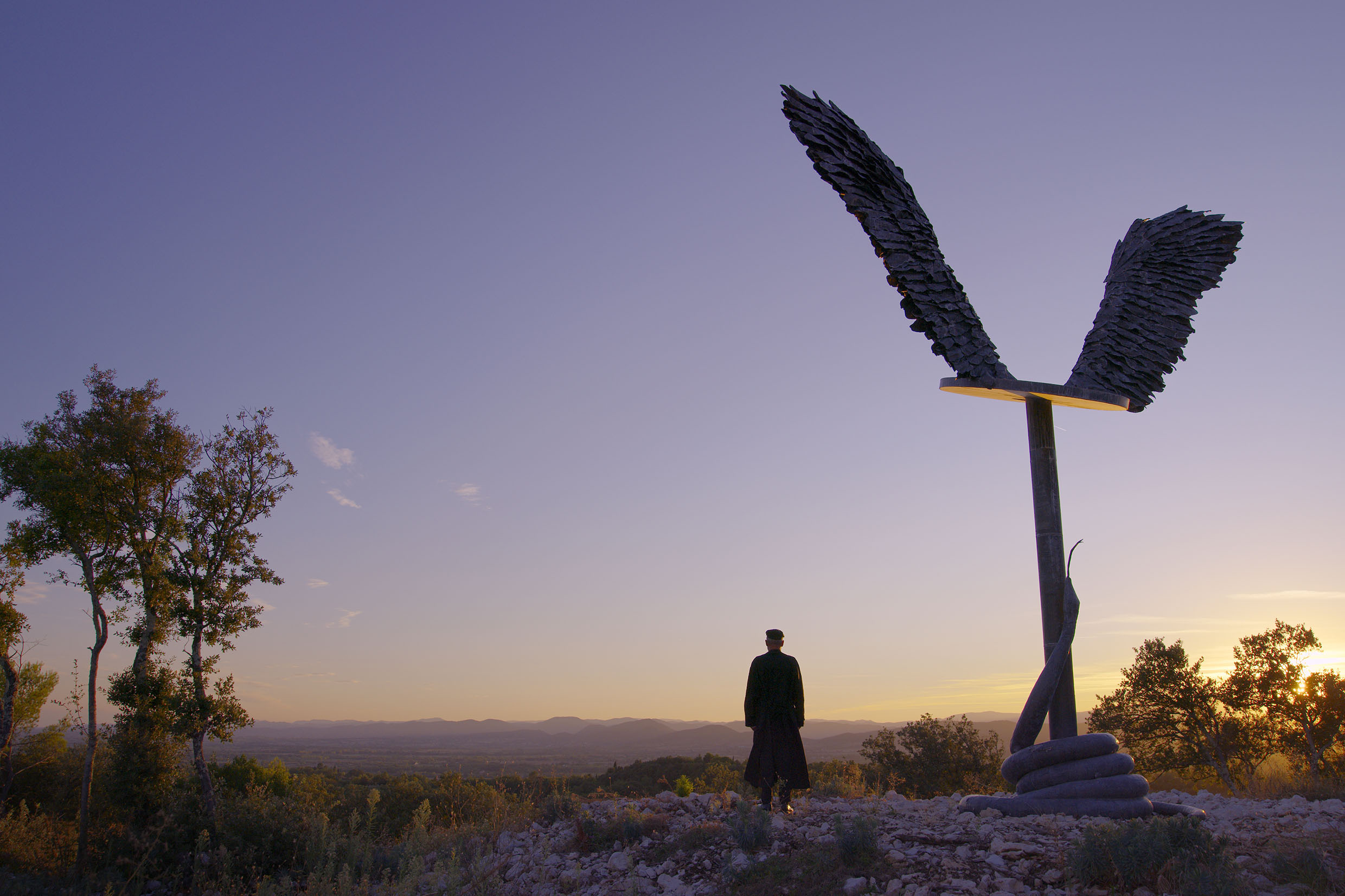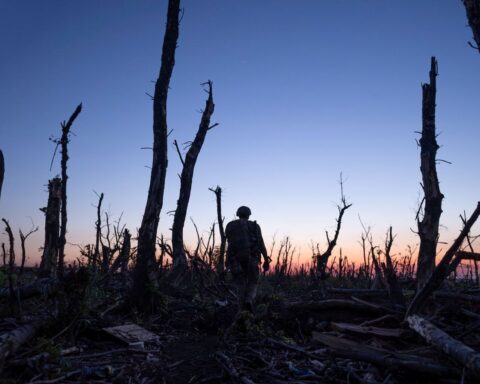Occupied City
(UK/Netherlands/USA, 262 min.)
Dir. Steve McQueen
Programme: Special Screenings (World Premiere)
With Occupied City, Steve McQueen delivers a haunting ghost story that navigates the past through the echoes that those who’ve been long dead leave upon the present. We all walk in the shadows of what came before, but in the city of Amsterdam, where McQueen and his wife and creative partner Bianca Stigter (Three Minutes: A Lengthening) have lived for many years, the recent past was a particular heinous episode.
In some ways, it’s very simple to describe this film that could be easily contextualized as much as a gallery piece as a cinematic presentation. Each image is so carefully considered, each frame so precise, yet we’re left in a state evoked most frequently by visual art: to revel in the lingering, to allow our eyes to wander to the edges of the 4:3 aspect frame, to follow one character versus another. If this was merely a travelogue about modern day Amsterdam, it would be an aesthetically admirable journey, one full of colourful people and places that exhibit the uniqueness of the renowned city.
Of course, these images are not the full story. With each composition, we hear of what came before during the Second World War, a series of facts and figures drawn from Stigter’s written work on which Occupied City is based. Narrated by Melanie Hyams in an engaging yet emotionally neutral way, we are subject to hours upon hours of atrocities that seemingly occurred within every apartment, and on every square, in this bustling place. Overtly, there’s a collision between what happened at this exact spot in the late 1930s or 1940s, and what is occurring in the present day. On a deeper level, however, it illustrates how the visible scars of massacre can be erased in time, and only through diligent, active remembering can one truly reconcile how the reverberations of the past continue to quietly propagate.
There’s an incessancy to what takes place, and the marathon running time (playing at Cannes with a fifteen minute intermission) is part of what makes it that much more effective. However, one tires of hearing of death after death, betrayal after betrayal, but that’s of course the power of what is being presented. We catch ourselves dulled by the tales of horror, inured to yet another faceless group long exterminated, their liquidation a literal wiping from the story of the city they once called home.
The city’s most famous wartime resident, Anne Frank, is spoken of tangentially in relation to other family stories. The focus is upon the thousands of others whose own lives did not capture the world’s attention except as statistics. In one scene, we hear about a family hidden in a cellar, then we see the modern resident open a closet to expose a kind of trap door, underneath a cramped area with canned goods and one of the city’s ubiquitous bicycles. Much later, we are look at a run-of-the-mill building on an innocuous street and the camera captures a cyclist colliding with what looks to be a person without housing, a small vignette in a larger story about the unfortunate being seen or ignored by those passing by.
One challenging aspect in this collision between past and present is how modern events such as COVID lockdown protests are presented on the same public squares where executions of those the Nazi-sympathetic Dutch executed numerous people to a rapt local crowd. It would be fatuous, I believe, to argue that McQueen is merely conflating valid restrictions due to a global pandemic and the very real fascistic tendencies of Holland during the war. I read it as the opposite, where our present hyperbole sees even the most relevant restriction as an attack on one’s liberty, or that any institutional action by the government is inherently suspect.
The narration speaks of real restrictions, real life-and-death moments, times when only a bold and perhaps foolhardy few actively worked to undermine the wartime regime. Occupied City reminds viewers, over and over, not only the culpability of the majority of the populace to simply live under Nazi rule without response, but how thousands upon thousands of people willingly and eagerly participated in the actions of genocide.
I’ve seen many countries that have their hands stained with the atrocities of the war conveniently bypass the complications of their own history. Germany, of course, is forced to confront the past time after time, but other countries, from those in close proximity to Holland—Austria and the like—have a tendency to downplay the actions of their populace, blame it on an “occupation” from outsiders, and present themselves as victims of a war machine.
The truth is far more insidious than that, of course. By presenting these stories over and over, by providing deeper context for how architecture, culture, and human behaviour continue to be shaped in ways subtle or overt by what happened during this period, Occupied reshapes how we see images of the present. It’s as if we see a black and white image that gets coloured by the narration, allowing us to perceive both what’s there and what was. It’s an extraordinary thing when one settles into its rhythm. While it requires some effort, the reward both emotionally and intellectually is profound.
Occupied City is a mammoth work in both running time and import, a perfect illustration of the synergy between Stigter’s perceptive investigation and McQueen’s keen eye and willingness to challenge his audience. By the film’s glorious ending, where finally the structural spell is broken and we see how past and present continue to evolve in ways that will frankly surprise some viewers, we feel that we have traveled through two liminal spaces simultaneously, forming a new, synergistic space where we neither are locked into the past nor blind to what once was as we blithely go about our day. This is, of course, the examined life Socrates spoke of, where we aren’t simply going through the motions of the quotidian, but nor are we forgoing the life part that is to be examined.
It’s a moving, vital experience to be occupied by the images and stories of Occupied City. The film generates an impact that will simply be impossible to replicate without a shared audience and a large screen, free from distraction to allow one to be engrossed in the long-form structure. This is art meant for the cinema, a purest form of filmic non-fiction that makes McQueen’s latest an absolute treasure.




